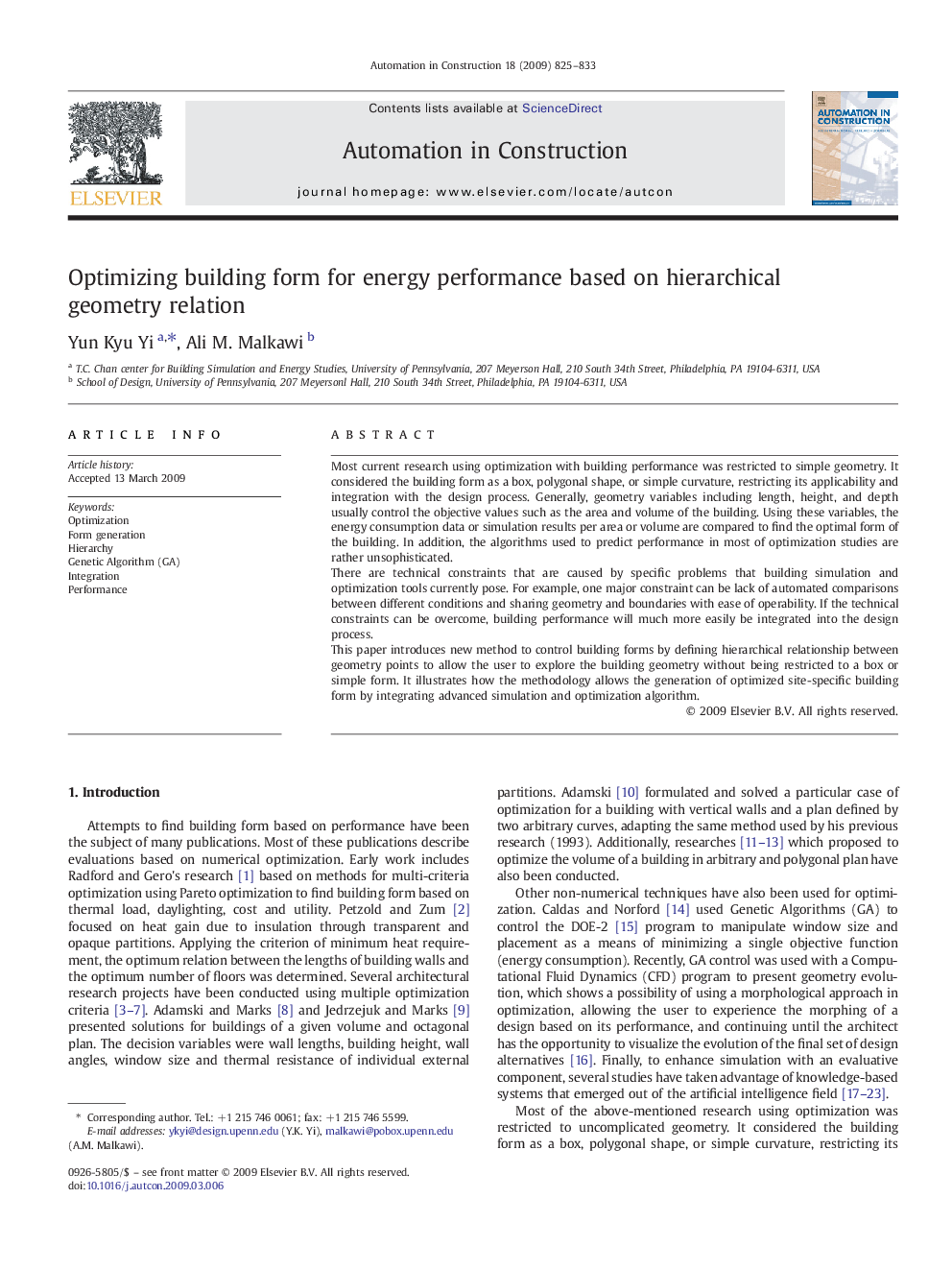| Article ID | Journal | Published Year | Pages | File Type |
|---|---|---|---|---|
| 247390 | Automation in Construction | 2009 | 9 Pages |
Most current research using optimization with building performance was restricted to simple geometry. It considered the building form as a box, polygonal shape, or simple curvature, restricting its applicability and integration with the design process. Generally, geometry variables including length, height, and depth usually control the objective values such as the area and volume of the building. Using these variables, the energy consumption data or simulation results per area or volume are compared to find the optimal form of the building. In addition, the algorithms used to predict performance in most of optimization studies are rather unsophisticated.There are technical constraints that are caused by specific problems that building simulation and optimization tools currently pose. For example, one major constraint can be lack of automated comparisons between different conditions and sharing geometry and boundaries with ease of operability. If the technical constraints can be overcome, building performance will much more easily be integrated into the design process.This paper introduces new method to control building forms by defining hierarchical relationship between geometry points to allow the user to explore the building geometry without being restricted to a box or simple form. It illustrates how the methodology allows the generation of optimized site-specific building form by integrating advanced simulation and optimization algorithm.
